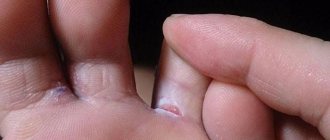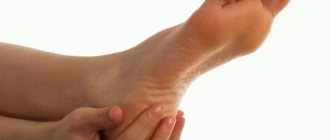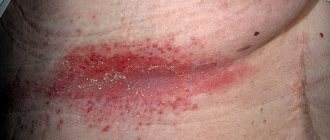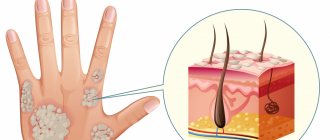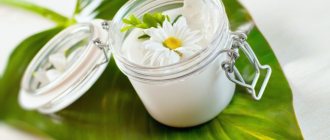Plantar hyperkeratosis is a thickening of the stratum corneum of the epidermis under the influence of physical factors affecting the foot. As the skin thickens, it becomes more resistant to damage and its sensitivity decreases. Hyperkeratosis is one example of the body's adaptive reactions to changing environmental conditions.
Hyperkeratosis becomes a problem in cases where, under the influence of a number of aggressive factors, the metabolism and fluid in the skin of the feet is disrupted, the skin loses elasticity and firmness, as well as mechanical strength.
This leads to the appearance of dry, bleeding or weeping cracks, deep calluses, which cause anxiety and sometimes cause serious pain that limits a person’s physical activity.
The problem of cracked heels
Most often, women experience increased dryness of the skin in the area of the feet, and in particular the heels. Men and children - less often. Painful cracks of varying depths cause pain when walking. In addition, such open wounds are an excellent breeding ground for pathogenic bacteria, which can easily get there.
You cannot ignore cracked heels, nor can you treat them with an ordinary cosmetic moisturizer. Its texture does not allow it to penetrate deep into rough skin. The problem must be resolved by other methods. To get rid of it, traditional methods of fighting, hardware medical techniques and medicines prescribed by a doctor are used.
Diet
Diet for skin diseases
- Efficacy: therapeutic effect after a month
- Time frame: three months or more
- Cost of products: 1400-1500 rubles per week
Nutrition is one of the important factors for skin health. Therefore, a lack of certain substances in the body, in particular vitamins A , E , etc., can lead to similar problems. To avoid them, the menu should include the following products:
- Fatty fish, liver, greens, carrots - to prevent vitamin A .
- Dairy products, nuts, cereals, eggs, vegetables, fruits - to provide sufficient amounts of B vitamins .
- Citrus fruits, sauerkraut, rosehip drinks are sources of vitamin C.
- buckthorn , seafood are sources of vitamin E.
- Bran, legumes - to provide the body with vitamin H.
Causes
A consultation with an experienced doctor at a clinic can help identify the cause of cracked heels. The most common causes of occurrence are:
- Vitamin deficiency in the body. Due to a lack of vitamins A, D and E, the skin begins to become rough and crack. A selected complex of vitamins and the inclusion of a large amount of fruits, vegetables, herbs and nuts in the diet will help correct the situation.
- Lack of fluid intake. A person consists of 75% water, and therefore it plays an important role in the functioning of all vital systems. The norm for an adult is about 2 liters per day.
- Skin diseases. Bacteria and fungi can compromise the integrity of the outer layer, causing the skin to become thicker and more inelastic. It can also be caused by psoriasis, a disease with a hereditary predisposition that can develop against the background of chronic or acquired infections in the body.
- Incorrectly selected shoes. Shoes made from non-natural materials that are too tight in the heel area lead to deformation of soft tissues, excessive sweating and the proliferation of pathogenic bacteria.
- Diseases of internal organs. Diseases there include chronic forms of diabetes mellitus, dysfunction of the thyroid gland and iodine deficiency, disruption of the digestive system and the functioning of the gastrointestinal tract, kidney and liver diseases. All this can lead to disruption of the water-salt balance and the appearance of cracks.
It is recommended to approach treatment comprehensively. First, contact your doctor, examine your body and get tested. Only after eliminating all serious problems can you engage in treatment with traditional methods.
Pathogenesis
On the surface of the soles the skin is quite thick and has a large number of sweat glands. In those places where the main support of the bones falls, there is a pronounced layer of subcutaneous fatty tissue, which protects the bone from external pressure.
With constant stress, as well as exposure to a number of provoking factors, such as wearing uncomfortable shoes, active physical activity, etc., a response is noted: skin surface cells begin to actively divide. hyperkeratosis develops - thickening of the surface layer of the skin. It becomes less elastic and hard, its properties change, and against the background of this, as well as disturbances in the hydrolipid balance and the quality of elastin and collagen fibers, cracks can develop.
Treatment methods for heel cracks
Effective treatment of cracks involves several methods that help to have a comprehensive effect on the skin. These include:
- steaming the skin;
- peelings;
- the use of creams and disinfectants to treat cracks;
- treatment of open wounds.
Special disinfectants help get rid of bacteria and fungus.
Classification
Depending on the characteristics of the disease, there are two types of cracks:
- Superficial (epidermal) - they develop within the epidermis and, healing, disappear without a trace.
- Deep (epidermal-dermal) - develop in the upper layers of the skin, localized in the epidermis and dermis. After the cracks have healed, scars may remain. Very often, deep formations cause pain and bleed. Bleeding formations are called ruptures.
Prevention of heel cracks and folk remedies
Strict adherence to the rules of personal hygiene, wearing only appropriate shoes, a balanced diet and proper care of the skin of the feet will help prevent the appearance of heel cracks.
To prevent cracked heels, special attention must be paid to the selection of shoes. It should be made of natural materials, be well ventilated and fit the size of the foot. You should not buy shoes that are too tight, too big or too small, or with too high a heel - all this increases the stress on the skin of your feet.
Traditional medicine involves the use of compresses, baths and ointments to combat dry skin:
- Compresses. Apply to the heels and moisturize the skin of the feet. After applying the composition to the heels, they are wrapped in plastic film, and socks are put on to enhance the effect.
- Baths. The key to success here is systematicity, and the main ingredients used are sea salt, starch, various herbs and white wine.
- Ointments based on Vaseline or badger fat are an effective remedy that perfectly softens rough skin, making it more elastic and receptive to all procedures.
It is worth noting that rough skin on the affected areas can only be removed using mechanical treatment.
Prevention
To prevent the development of ruptures in the feet, it is necessary to adhere to the following rules of prevention:
- Always wear high-quality, comfortable shoes that fit well.
- Do not overuse tanning to avoid drying out your skin.
- Do not overdo it with peeling, use moisturizing creams regularly.
- Don't wear open shoes too often.
- Eat right, add more fruits and vegetables to your menu.
- If the skin on the feet is very dry, regularly take warm baths with soda and use other moisturizing methods.
- If cracks form on your feet, consult a doctor.
During pregnancy
During pregnancy , the load on the legs increases significantly. In addition, hormonal changes and general changes affect the general condition of the body. As a result, the risk of cracking increases. They appear especially often in late pregnancy.
The expectant mother should consult a doctor about treatment methods. You can use folk remedies - baths, compresses, etc. The doctor may also recommend a vitamin-mineral complex, ointments, creams, etc.
Treatment of heel cracks at the Belleza Clinic
Specialists from the Belleza clinic will help you effectively get rid of the problem of heel cracks. Only professional equipment is used here, and all the technicians have extensive experience in eliminating this problem. With the help of hardware medical pedicure and heel care individually selected by the clinic’s doctors, you will forget about cracks.
In addition to this problem, doctors solve other, more complex problems. For example, laser treatment of nail fungus. Contact the Belleza clinic in Kiev now, make an appointment at a time convenient for you and get advice and help from professionals.
Tests and diagnostics
A dermatologist or podologist conducts a survey of the patient and an external examination, during which this condition is easily determined. It is recommended to consult a doctor if no visible improvement is observed after a week of self-treatment. You should also definitely consult a specialist if the tears are more than 1 mm deep.
If the appearance of cracks is associated with other diseases, additional consultations with specialists, as well as the necessary studies, are prescribed if necessary.
Aspirin tincture
To treat cracked heels, prepare a tincture of aspirin tablets. For this:
- Grind 10 tablets of acetylsalicylic acid.
- Pour the resulting powder with a glass of vodka or alcohol.
- Place the container with the tincture in a dark place for 2 days;
The tincture is easy to use - just moisten gauze and apply to the area affected by cracks, wrap with film and leave overnight.
Use the compress 2-3 times a week.
Masks made from simple ingredients
You can create a mask for cracked heels using products that are always on hand:
- From zucchini . Grate a medium-sized fruit and apply the paste to your heel. Wrap your feet in film and put on socks. After 20 minutes, wash off the composition from the skin and apply cream. This mask can relieve tension and soften the skin;
- From mayonnaise . Apply a thick layer of olive mayonnaise to your heels, put on clean shoe covers, and cotton socks on top. This mask effectively moisturizes;
- From fresh tomatoes . Chop ripe red tomatoes with a knife or in a blender and apply to your feet. Wrap your feet in film and leave for an hour. The acids contained in tomatoes destroy the lipid bonds of dead skin and open access to the components of the moisturizer;
- From cosmetic clay . Dilute dry clay with water to a thick sour cream and apply to your heels for 20 minutes, and then rinse with water. Clay has an antimicrobial effect and increases skin elasticity. You can also add essential oils to the clay - tea tree, lemon.
- From the fruit of an orange . Cut one ripe orange in half and squeeze out the juice. Place orange halves without juice on your heels, and put on your socks on top. After 20 minutes, remove the fruit and rinse your feet with water. This mask is comparable to a fruit peeling.
Please note that the pulp from tomatoes and oranges is quite caustic. Therefore, do not use them to eliminate fresh cracks - due to irritation, quite intense painful sensations will arise.
The main causes of itchy heels
It is not always possible to independently determine the factors that caused such a symptom. It could be a minor scratch that the body has sent more histamine to heal. In this case, the itching in the heel goes away quickly and without a trace if you do not injure the skin by scratching and keep your feet clean.
There are more serious reasons, the elimination of which may require a full examination and consultation with doctors of various specializations.
- Allergy. The reaction to external or internal irritants in most cases is expressed by redness and the appearance of small watery pimples. Allergies can be caused by residue from washing powder or conditioner on socks, tights, knitwear or low-quality wool, shoes, and cosmetics. The skin of a child reacts especially acutely. There are also cases when heels itch due to poor nutrition and medication.
- Fungus. The factors affecting such an infectious disease are varied: insufficient hygiene, changes in weather and climate, excessive sweating, poor-quality shoe material, decreased immunity, long-term use of antibiotics. Fungal spores affect the feet, initially causing only itching. Without proper treatment, microorganisms penetrate into the deep layers of the skin, scratching wounds open the way to another infection.
- Tired legs. Standing for a long time, wearing high-heeled shoes that don't fit and are simply uncomfortable causes tingling. Then, even during rest, a person feels additional discomfort: the heels are very itchy, the skin “burns”.
- Hypothermia. When you are outside or in an unheated room, your feet do not immediately itch. A person feels a clear manifestation of the symptom when warming up. Then the heels may itch all night and even for several days in a row.
Read also: Rash on the body of a child with and without itching and fever: how to treat
- Avitaminosis. A lack of beneficial nutrients negatively affects the condition of the skin and internal organs. Any part of the body can itch, and heels are no exception. In addition to itching, cracks appear on the body.
- Insect bites. To a greater extent, for this reason, discomfort is felt in the summer, when the skin is not protected by clothing or shoes. After relaxing in nature, you may notice that your heels are red and itchy, and swelling has appeared. Bedbug bites are possible at any time of the year.
- Increased blood glucose levels. In diabetes, the walls of blood vessels become thinner, sugar irritates the skin, causing increased dryness, cracking, itching, and loss of sensitivity. In the absence of treatment and preventive measures, wounds form.
- Scabies. You can become infected with ticks in any public place. It is enough to stand barefoot on the rug where the patient was. Symptoms of infection are severe itching, red paired dots - the entrance and exit of the subcutaneous tunnels, a feeling of “pins and needles”. If you immediately determine why your heel is very itchy and undergo a course of treatment, the spread of parasites throughout the body can be avoided.
- Pathologies of the pancreas. Violation of carbohydrate and protein balance provokes a feeling of discomfort on the skin. The pancreas does not fully perform its functions; as a result, toxins irritate the epidermal cells from the inside.
How to warn?
If you have dry feet, the likelihood of cracks is high, so take care of their prevention.
What do we have to do?
- visit a podiatrist once a month for hardware treatment of the skin of the feet, removal of potentially dangerous areas - thickenings, corns, calluses where tears form;
- take care of a complete diet with sufficient vitamins and minerals;
- Every day after washing your feet before going to bed, apply moisturizing and nourishing creams to the skin of your feet;
- regularly massage your feet to improve blood circulation and metabolic processes;
- control weight;
- use special insoles, arch supports, orthopedic shoes if you have flat feet or other foot deformities;
- periodically treat feet with pumice stone and fine abrasive to remove dead cells.
If cracks appear, you should not try to eliminate them yourself, as this can worsen the situation and lead to complications. A competent approach is important here, which includes not only the treatment of cracks in the feet, but also an analysis of possible causes and recommendations for preventing relapse. If you encounter such a problem, contact a podiatrist. This is a specialist who specializes in treating diseases of the nails and skin of the feet.
11 1
Compress with coconut oil
Coconut oil is used to moisturize the skin, hair, nails, and also has an antibacterial effect and retains moisture in the skin. It is soft, thick, and has a cream-like consistency. To combat cracks with coconut oil:
- Take a foot bath at 40 degrees with or without additives. Use herbal infusions or essential oils as additional ingredients. Avoid salt baths - the saline solution will cause discomfort and tingling in the cracked area.
- Rub your heels with a pumice stone or use a scrub to remove dead skin cells and facilitate further hydration.
- Apply a small amount of coconut oil to the entire foot, massaging it from heel to toes.
- Wear thick cotton or wool socks.
Repeat the procedure for 7 days.
Dexeryl
An excellent remedy for treating dermatological problems. Made in France. Sold in small tubes, cost about 600 rubles.
The basis of the cream is glyceryl and other useful components. Due to this, deep nutrition and hydration of the heels and regeneration of skin cells are observed.
Apply the cream 1-2 times a day, thoroughly rubbing into the damaged area. The duration of the course is determined until the wounds are completely healed.
There are almost no contraindications to the use of the product. The only thing is that the cream is not used for individual intolerance to substances.



